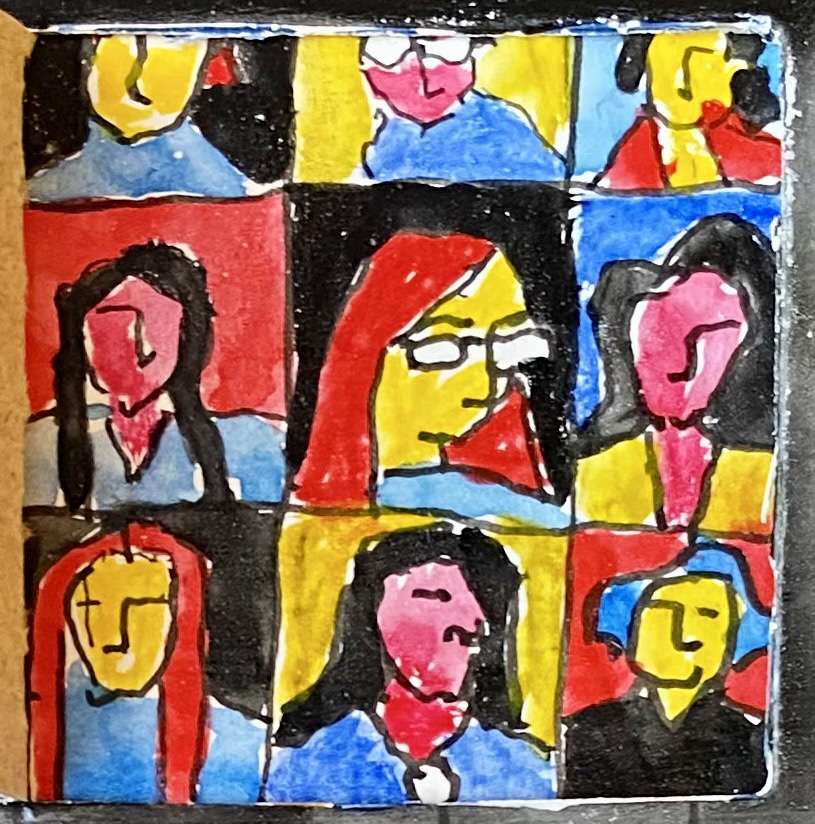

Falling on deaf ears
Falling on deaf ears
For deaf and hard-of-hearing students, the pandemic presents unforeseen challenges.

s Matthew Watkins entered the final weeks of his bachelor’s degree program at the Rochester Institute of Technology, the COVID-19 pandemic struck.
The infectious killer shut down campuses across the country in the spring of 2020, including RIT, and Watkins scrambled to adapt.
One of around 20,000 students with hearing loss nationally, Watkins first experimented with joining virtual meetings on different devices. He quickly crossed options off, trying a Samsung Tab A briefly before concluding that it was too difficult to focus on the presentation, the instructor, and the sign-language interpreter simultaneously.
Over the remainder of the semester, he tried various approaches, including using his Google Pixel to view the presentation and his tablet to watch the interpreter. None of it worked well and Watkins became keenly aware of his disadvantage.
âThe other students only need to see the presentation and hear the professor, so the setting of the Zoom screen is perfect, big or small,â Watkins said. âFor me, that need to see three screens at once, there were no screen designs available [on mobile devices] that make it possible.â
Now a graduate student at RIT, Watkins uses his desktop computer for virtual meetings. Although distanced learning remains a struggle, more recent software updates have improved accessibility features and made it easier for participants who are deaf or hearing-impaired to lock certain users in place so they can put their focus where it belongs.
RIT, which has a deaf-learning institute and about 1,100 deaf students, is hardly the only school struggling with this issue, according to the dean of the SU School of Education and a director at the Syracuse Law Schoolâs Burton Blatt Institute, which specializes in disability issues. They both called for more attention to the needs of students with disabilities, noting shortcomings before the pandemic that have since been exacerbated.
While auto-captioning has come a long way, Watkins said, it’s still not perfect. He said it fails when participants do not speak clearly or loudly enough or when their devices pick up background noise. There are often errors in the transcript, so some students revert to interpreters. At RIT, those were scarce, even before the pandemic hit.
At the beginning of the pandemic, the school only used the interpreters it had already hired, and it couldnât keep up with the volume of requests, he said. As usual, the handful of interpreters RIT did have were booked, requiring Watkins and other students to adapt even more.
The school eventually adapted, too, hiring freelance contractors and fulfilling more requests. It also required students to file requests for interpreters three days in advance instead of two.
But Watkins said interpreters, often assigned to one class after another, would show up late to classes or not at all, and he struggled academically because of the intermittencies. To overcome this, Watkins scheduled appointments with tutors more often, lining his availability up with interpreters.

Marc Charmatz, senior attorney at the National Association of the Deaf, said many others have encountered problems similar to those Watkins experienced since colleges transitioned to virtual or hybrid learning. âUntil the technology improves, and depending on the individual needs of students, sign language interpreters may be necessary to ensure effective communication,â Charmatz said.
In light of the pandemic, Watkins, other deaf students, and students with disabilities, in general, have needed more accommodations, said Wendy Harbour, director of the National Center for College Students with Disabilities. Because of virtual learning environments, students who didn’t previously need accommodations â or have only needed a select few â have been seeking more adjustments, she said.
Harbour said she has heard reports of disability resource centers sometimes making the situation worse by doubling down on red tape like doctor’s notes.

“Students have a lot of empathy when really nice professors were struggling to make things work because they often understood that it was tough on students too,â Harbour said. âOn the other hand, some âmeanerâ professors became super strict and demanding, and sometimes even asked the impossible.”
Harbour recalls one student with ADHD and an anxiety disorder having a professor who banned students from looking away from screens during classes or testing. The student, knowing this wouldnât work, addressed her concerns with the professor, but they started taking off points anyway.
Virtual learning environments have highlighted a previously hidden element to a flawed approach to educating students with disabilities, said Stephen Kuusisto, director of Interdisciplinary Programs and Outreach at the Burton Blatt Institute at Syracuse University. Often, he added, universities don’t require sufficient training on different learning styles which help students with disabilities succeed.
SU School of Education dean Joanna Masingila said the evidence is building for what experts call âUniversal Design for Learning, â which provides a blueprint for students to have equal opportunity to learn regardless of ability, disability, age, gender, culture or linguistic background. In other words, it focuses on the what, how and why of learning, she said.
Kuusisto, a member of Syracuse’s Disability External Review Committee, which is auditing the inclusivity of the campus environment, said it begins with awareness. The fight for college students to receive the accommodations they need resembles the greater issue of disability rights, he added.
âEvery time a person who needs an accommodation is treated with respect,â he said, âthe nature of the social contract is widened.â
The illustration is courtesy of Nancy Rourke, an internationally-known Deaf artist and ARTivist.
